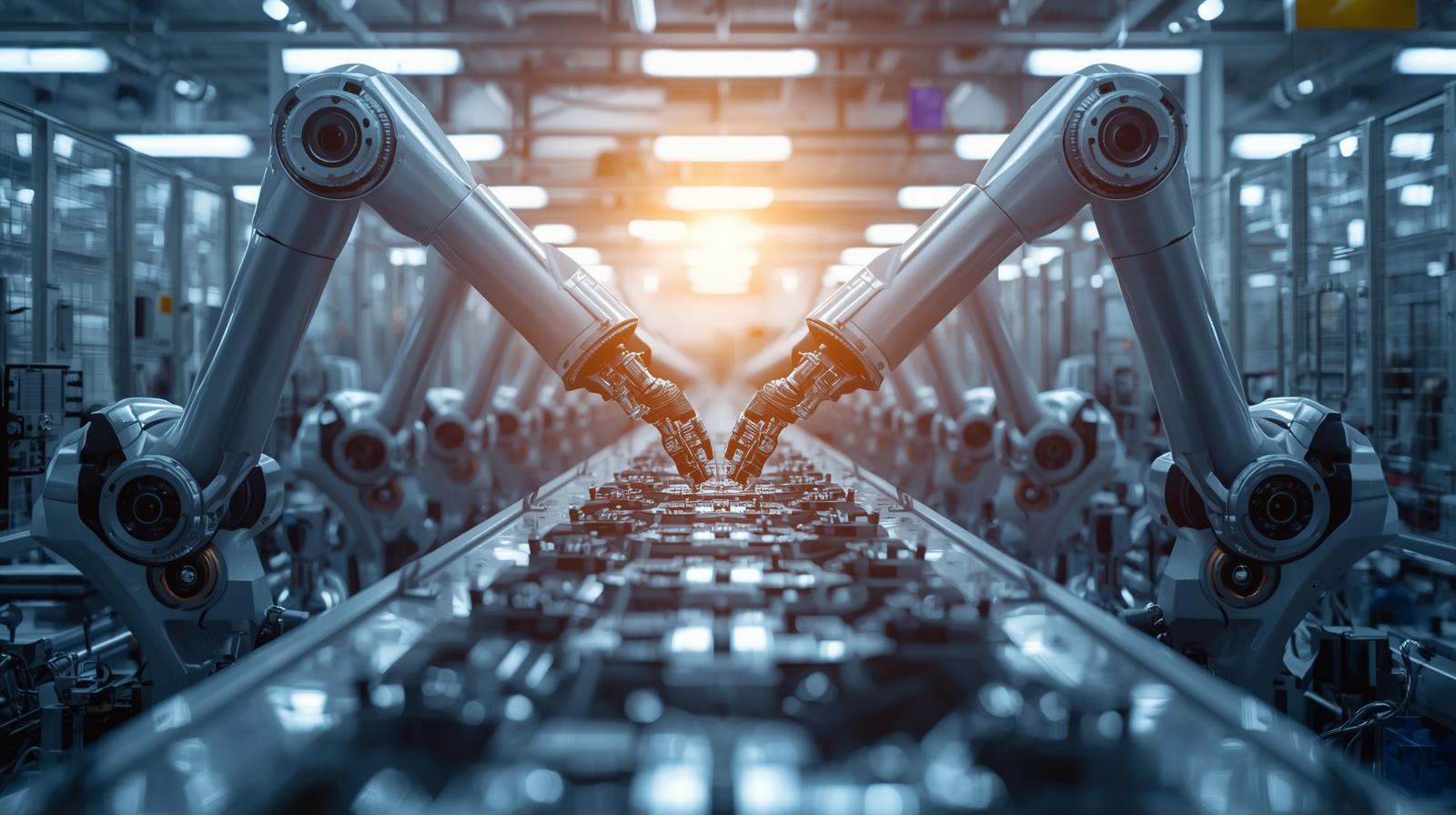The rapid evolution of intelligent robotics is redefining the way industries operate, transforming processes across manufacturing, healthcare, logistics, and everyday life. As artificial intelligence (AI), machine learning (ML), and advanced sensing technologies continue to integrate into robotic systems, the future of intelligent robotics looks promising and disruptive. By 2025 and beyond, several key trends are set to shape the trajectory of this industry, driving innovation, efficiency, and new applications.
Download PDF Brochure @ https://www.marketsandmarkets.com/pdfdownloadNew.asp?id=99226522

Integration of Artificial Intelligence and Machine Learning
AI and ML have become the backbone of intelligent robotics, enabling machines to learn, adapt, and perform complex tasks with minimal human intervention. Future robotic systems will move beyond simple automation, becoming capable of reasoning, decision-making, and self-optimization. Enhanced algorithms will allow robots to analyze data in real time, predict outcomes, and adjust their behavior accordingly. This evolution will significantly benefit industries such as healthcare, where surgical robots can learn from past procedures, or logistics, where robots can dynamically optimize delivery routes.
Collaborative Robotics (Cobots) Leading Industrial Transformation
The rise of collaborative robots, or cobots, marks a shift from isolated industrial automation to human-robot teamwork. These robots are designed to safely work alongside humans, enhancing productivity without replacing the workforce. By 2025, cobots will become increasingly sophisticated, featuring advanced vision systems, improved safety mechanisms, and intuitive interfaces for seamless interaction. Their adaptability makes them ideal for small and medium-sized enterprises, reducing operational costs while maintaining flexibility in production processes.
Robotics in Healthcare and Elderly Care
The healthcare sector is poised to witness a surge in intelligent robotics adoption, particularly in surgical assistance, rehabilitation, and elderly care. Precision surgical robots are already transforming operating rooms, and future developments will enhance their accuracy, reducing risks and improving patient outcomes. Additionally, with the global aging population, robots designed for elderly care—offering companionship, mobility support, and health monitoring—will become essential. These advancements will alleviate the burden on healthcare systems while ensuring improved quality of life for patients.
Autonomous Mobile Robots in Logistics and Supply Chain
The logistics and supply chain industry is undergoing a revolution with the deployment of autonomous mobile robots (AMRs). These robots streamline operations by automating inventory management, order fulfillment, and last-mile delivery. As e-commerce continues to expand, the demand for speed, accuracy, and cost efficiency will propel the widespread use of AMRs. By leveraging AI-driven navigation, sensor fusion, and real-time data analytics, future AMRs will achieve unparalleled efficiency, significantly reducing human dependency in warehouse and distribution operations.
Advancements in Sensing and Perception Technologies
For robots to operate intelligently in dynamic environments, robust sensing and perception capabilities are crucial. The future will see significant advancements in 3D vision systems, LiDAR, and tactile sensors, enabling robots to perceive and interact with their surroundings more naturally. These technologies will allow robots to perform delicate tasks such as handling fragile objects, navigating complex terrains, and adapting to unpredictable situations. Improved perception will also enhance the capabilities of autonomous vehicles, agricultural robots, and service robots in public spaces.
Ethical Considerations and Human-Robot Interaction
As intelligent robotics becomes more prevalent, ethical concerns regarding data privacy, job displacement, and decision-making autonomy will intensify. Future developments will focus on building trust between humans and robots through transparent operations, explainable AI, and regulatory frameworks. Human-robot interaction will evolve to be more intuitive, leveraging natural language processing, emotion recognition, and adaptive communication methods. This human-centric approach will ensure that robotics technology enhances human capabilities rather than replacing them.
Frequently Asked Questions (FAQs) on the Intelligent Robotics Market
- What is the Intelligent Robotics Market?
The Intelligent Robotics Market refers to the industry focused on the development and deployment of robots integrated with advanced technologies such as artificial intelligence (AI), machine learning (ML), computer vision, and sensor technologies. These robots are designed to perform tasks autonomously, adapt to changing environments, and improve efficiency in sectors like manufacturing, healthcare, logistics, agriculture, and defense.
- What is driving the growth of the Intelligent Robotics Market?
The market is primarily driven by increasing automation in industries, advancements in AI and ML, the rising need for cost-efficient and precise operations, labor shortages in several sectors, and the growing adoption of Industry 4.0 technologies. Additionally, demand for autonomous mobile robots, collaborative robots (cobots), and AI-powered service robots is accelerating global market expansion.
- What are the major applications of intelligent robotics?
Intelligent robotics is widely used in manufacturing and industrial automation, healthcare (surgical robots, rehabilitation robots), logistics and supply chain (warehouse automation, delivery robots), agriculture (autonomous tractors, crop monitoring), defense and security (unmanned vehicles), and retail for customer service and inventory management.
- Who are the key players in the Intelligent Robotics Market?
Major players in the Intelligent Robotics Market include ABB, FANUC, KUKA, Yaskawa Electric Corporation, Omron, Universal Robots, iRobot, SoftBank Robotics, and Boston Dynamics. These companies are investing heavily in R&D to develop innovative robotic solutions and expand their global presence.
- What are the future trends in the Intelligent Robotics Market?
Future trends include the integration of AI-powered decision-making, growth in collaborative and humanoid robots, increased use of cloud robotics and edge AI, enhanced human-robot collaboration, and the adoption of 5G connectivity for real-time robotic operations. Sustainability and energy-efficient robotics will also gain prominence in the coming years.
- What challenges does the Intelligent Robotics Market face?
Key challenges include high implementation costs, cybersecurity risks, technical complexities in integrating robotics with existing systems, regulatory compliance issues, and concerns over workforce displacement due to automation. Addressing these challenges will be crucial for sustained market growth.
See Related Semiconductor Reports:
Testing, Inspection, and Certification (TIC) Market by Service Type (Testing, Inspection, Certification), Source (In-house, Outsourced), Application (Consumer Goods & Retail, Agriculture & Food, Chemical, Energy & Power) – Global Forecast to 2030
Home Automation System Market by Lighting Controls, Smart Speakers, Entertainment Controls, HVAC Controls, Security & Access Controls, Wired, Wireless, Behavioral, Proactive, Multi-family Residence, Single – family Residence Global Forecast to 2029
